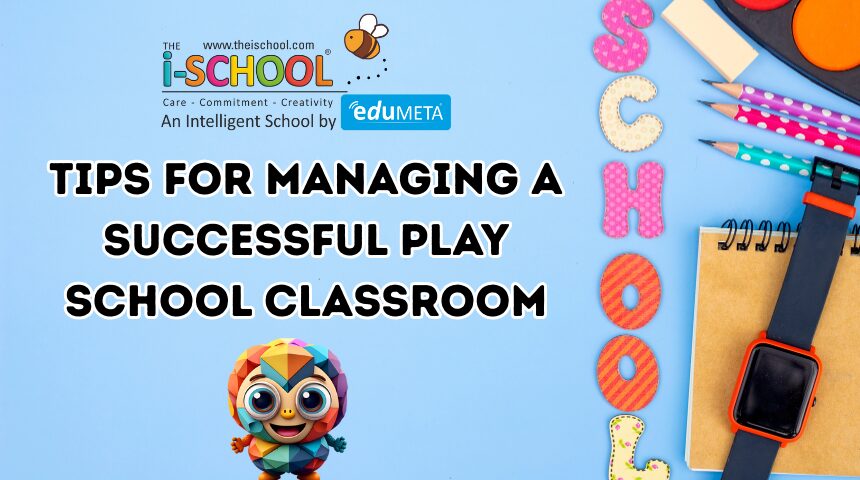Tips for Managing a Successful Play School Classroom

Managing a play school classroom is an art of balancing structure, creativity, and heartfelt connection. At eduMETA THE i-SCHOOL, we believe a thriving classroom blends routines with freedom, discipline with warmth, and structure with imagination. Here are top-tier strategies to help educators cultivate a positive, engaging, and well-behaved classroom.
1. Establish Clear Routines & Consistent Structure
Young children flourish when they know what to expect. Visual schedules (with pictures/icons) clarify the day’s progression circle time, play, snack, nap, etc. and ease transitions. Reinforce routines by using songs, rhymes, or timers to make moving between activities smoother.
2. Set and Model Clear Expectations
Define a few memorable rules for example, “hands to yourself” or “raise your hand before speaking” and display them with visuals. Teach these behaviors explicitly, model them in your own actions, and revisit them regularly.
3. Nurture Positive Behavior with Reinforcement
Celebrate kind, helpful, or respectful behaviors with praise and recognition words, smiles, applause, or small rewards go a long way. Build a positive classroom culture by focusing more on reinforcing the right behavior than penalizing mistakes.
4. Assign Classroom Jobs to Build Responsibility
Children love contributing! Assign roles like line leader, clean-up helper, or class librarian. Rotate them frequently so every child gets a chance to shine. Feeling helpful fosters ownership and smoother classroom operations.
5. Design Engaging & Inviting Learning Spaces
Use child-sized furniture and distinct learning zones (e.g., reading corner, art, dramatic play) to balance freedom and focus. Keep materials accessible using clear bins and picture labels—this encourages children to choose and return items independently.
6. Support Emotional Regulation with Calm-Down Spaces
Provide a cozy corner with soft cushions, quiet toys, or calming visuals where children can manage their emotions. Teach simple self-regulation techniques and model appropriate emotional responses.
7. Handle Transitions with Creativity and Timing
Transitions can be tricky. Use gentle reminders like “5 minutes till clean-up” and integrate fun cues such as a cleanup song or clap rhythm. Visual timers help set expectations and encourage cooperation.
8. Create a Supportive Emotional Atmosphere
Practice active listening, validate feelings, and respond compassionately to children’s emotions. Building strong relationships laid with respect and trust helps reduce misbehavior and promotes community.
9. Promote Inclusion Through Responsive Teaching
Adapt lessons to diverse abilities and interests, offering support where needed and challenges where appropriate. Incorporate emergent curriculum basing activities on children’s ideas and interests for greater engagement.
10. Engage Parents as Partners
Keep parents in the loop through regular updates, positive notes, and open communication. Share strategies so they can reinforce routines and behaviors at home, creating consistency across environments.
11. Be Proactive and Flexible
Observe children’s needs and anticipate potential challenges. If a planned activity doesn’t engage, be ready to pivot add movement, modify the material, or simplify the transition.
12. Foster a Culture of Respect, Joy, and Discovery
Use positive, encouraging language say “Walk inside please” instead of “No running”. Build a joyful classroom where laughter, creativity, and kindness are woven into daily life.
Final Thoughts
A well-managed play school classroom isn’t about control it’s about cultivating a space where young learners feel safe, respected, and excited to explore. By combining consistent routines, emotional support, engaging environments, and family collaboration, you lay the groundwork for curiosity, confidence, and lifelong learning.
At eduMETA THE i-SCHOOL, our mission is to nurture environments where every child can thrive smartly, sensitively, and joyfully.
